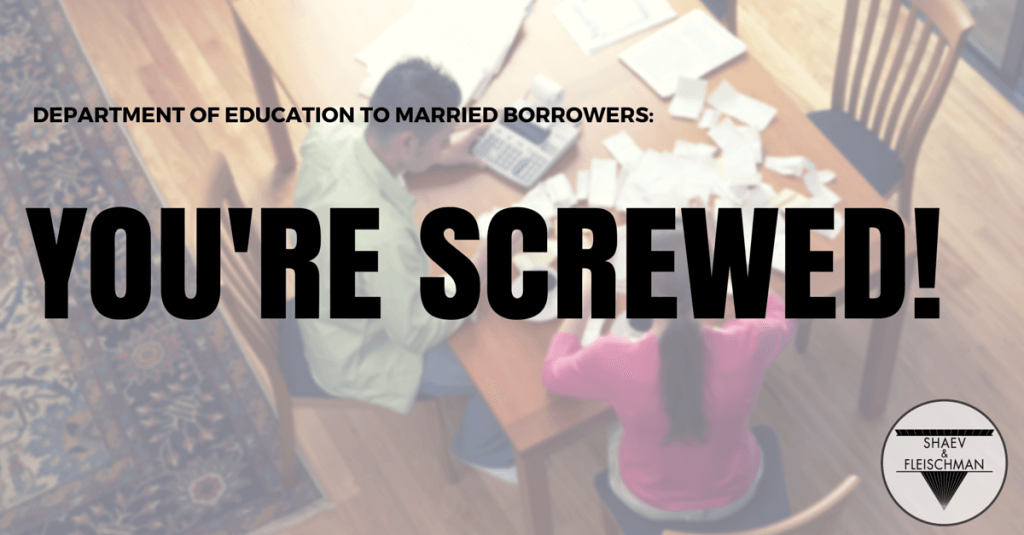The U.S. Department of Education, as part of a continuing public relations effort to look like it’s trying to help federal student loan borrowers, on July 7, 2015 announced an enormous expansion of the highly-regarded Pay-As-You Earn repayment program.
Under the expansion, an additional six million federal loan borrowers would be able to cap their federal student loan payments at 10% of their disposable adjusted gross income.
Unpaid balances would be discharged after the borrower makes 20 years of payments if the borrower does not owe any money for graduate school, and after 20 years of payments if any federal student loans are for graduate studies.
That’s a big win for borrowers now ineligible for PAYE. For many, the only option is Income-Based Repayment – which calls for payments of 15% of disposable adjusted gross income and discharge after 25 years.
Until now, Pay-As-You-Earn was available only to a limited number of federal student loan borrowers based on the age of their loans. The new version would lift age requirements and make the repayment option available to all borrowers with a Direct Loan.
In 2014, President Obama issued a Presidential Memorandum directing the U.S. Department of Education to propose regulations to ease the burden of student loan debt by expanding repayment options available to borrowers and building awareness of income-driven repayment plans.
“A college education is one of the most important investments that Americans can make in their futures. Unfortunately, for too many hardworking families, it feels like a higher education is simply slipping out of reach,” said U.S. Secretary of Education Arne Duncan. “This proposal is an investment in our economy’s future that provides targeted benefits to even more borrowers, so they can stay current on their loans and furthers our commitment to lifting the burden of crushing student loan debt.”
Sounds great, right?
For some, it is. But for student loan borrowers who are married the changes will be financial catastrophic.
Under current regulations if a married borrower files a separate Federal income tax return, the Education Department uses only the borrower’s adjusted gross income (AGI) to determine the amount due under Income-Based Repayment, Pay-As-You-Earn, or any other income dependent repayment plan. This works out well for married people who don’t mix finances with their spouses.
The new regulations, to be published in the Federal Register on July 9, 2015, will provide as follow:
in the case of a married borrower filing a separate Federal income tax return, use the adjusted gross income (AGI) of both the borrower and the borrower’s spouse to determine whether the borrower has a partial financial hardship (PFH) and to calculate the monthly payment amount. A married borrower filing separately who is separated from his or her spouse or who is unable to reasonably access his or her spouse’s income is not required to provide his or her spouse’s AGI.
See what they did there? They gave with one hand, and took away with the other.
Anyone who wants to reduce their payments under the new version of Pay-As-You-Earn will be forced to use their spouse’s adjusted gross income as well as their own. For people who are married to someone with a higher income, that means 10% of AGI will be a lot higher than under current calculations.
The only options for married borrowers who want to reduce their federal student loan payments will be to get separated or somehow convince the Education Department that they are unable to reasonably access their spouse’s income.
The second option will likely be difficult, which will likely lead to millions of federal student loan borrowers moving out of the marital home in an effort to keep their payments under control.
Even worse, I can see people getting divorced so they can live together yet still keep their finances separate for the purposes of student loan repayment.
If you think this new payment option is a bad idea, you should submit comments within 30 days of the date of publication of the proposed regulations. Submit your comments through the Federal eRulemaking Portal or via postal mail, commercial delivery, or hand delivery. Comments can’t be submitted by fax or by email or those submitted after the comment period.
Federal eRulemaking Portal: Go to www.regulations.gov to submit your comments electronically. Information on using Regulations.gov, including instructions for accessing agency documents, submitting comments, and viewing the docket, is available on the site under “Are you new to the site?”
Postal Mail, Commercial Delivery, or Hand Delivery: The Department strongly encourages commenters to submit their comments electronically. However, if you mail or deliver your comments about the proposed regulations, address them to Jean-Didier Giana, U.S. Department of Education, 1990 K Street, NW., room 8055, Washington, DC 20006–8502.
